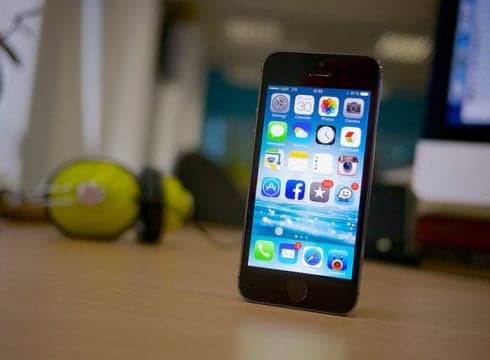Inc42 Daily Brief
Stay Ahead With Daily News & Analysis on India’s Tech & Startup Economy
Mobile Apps have made e-stores more personal and accessible. At the same time, installing apps gives access to the user’s basic information and media. This means, ecommerce stores have more data at their fingertips and can use it in their push notifications.
So with all the data and accessibility, here is what you as an ecommerce player, need to look at:
- Do you use all the data that you have access to?
- Do you cater to each app user’s tastes and requirements?
- Are you sharing the right content with the right users?
- And most importantly (mostly because that’s the focus of this post), do you personalize your notifications?
The answer to all these questions is a resounding NO. Or at least that’s what the top ecommerce apps in India, from the Google Play store show.
While most ecommerce companies have a major focus on personalizing the in-app experience, their notifications are generic, impersonal and un-impactful.
Here are some of the pet-peeves you need to work around:
Generic Banners
Banners or images have become common in mobile notification. These banners are enticing, with eye-catching designs, attractive fonts and bright colors. But here is the problem: Most banners do not even mention the product/category that they are trying to promote. Here’s what I mean:
It’s fundoo Friday alright. But what’s my incentive in visiting your app?
As I am challenging this notification, you will want me tell what’s better. So here’s getting one bit closer:
Now this makes some sense to my most basic instinct as a shopper; a sale. My problem does not end though. You are in my mobile as an app. You have access to everything that I like. You know how I behave at which offer. Then why will you not take the liberty of being “relevant to me”?
Just when I had this thought, here is what a notification from Snapdeal read:
We notice that this notification:
1. Targets a particular audience,
2. Mentions exactly which categories to visit, and
3. Offers extra incentive to shop on the app
But there is a small mismatch. It was sent to a woman. No, the data they had about me wasn’t wrong. They just didn’t’ use it. For the purpose of this analysis, we had over 50 people, 20 females and 30 males, install these apps in their phones. This happened to be a generic notification to all. One might argue that women buy menswear too. But then why did you have to sit in my mobile, and ask for access to all the information about me?
Sale! Sale! Sale!
Over 80% of push notifications cry out loud: Sale! While this is a good tactic to get the users’ attention, it also gives rise to unrealistic expectations. Deep discounts cannot be sustained forever, and if the only hook used by an e-store is sale, then the store itself won’t sustain.
This is an example of a notification that makes sense:
40% off on a particular book does not mean that similar discounts will be on offer on other items. This is a clever way to lure ‘book enthusiasts’ to the e-store.
Another example of a well-crafted notification is this:
They haven’t offered any discount. It is a clean image with a clear message. There is no vague/false offer. The ‘NEW’ on the right is an encouraging nudge to the user.
Here’s another example of an effective notification:
Designed in the form of a quiz, this notification arouses user’s curiosity and increases chances of his tapping on the image and landing in the app.
There are multiple ways to create mobile notifications that don’t scream out, “Sale!” and still work well.
Personalized Notifications
The one thing missing from all mobile notifications is the element of personalization. For a thorough research, we considered notifications sent by specific ecommerce companies to 50 unique users. Invariably, all notifications were the same! There was not even an attempt at personalization. And this is the biggest hurdle in getting the users’ attention and encouraging them to return to the app.
We are moving the mobile because it allows a more personal space with the visitor. We are already witnessing personalization on the web, making the online shopping experience worthwhile.
The browsing behavior of users across the app generates enough insights into a user’s preferences. Companies like TargetingMantra are providing the personalization as a service. The bottom-line is that as we enter the territory of mobile, let’s ensure that every communication across the app, chiefly the attention grabbers like notifications, speak to each customer in their language.
What’s your takeaway?
Mobile notifications are one of the best tools to lure users back to the app. One tap is all that is needed.
The entire body of the notification, and not just a link/URL, can be tapped and this makes notifications even more effective in bringing customers to the app.
- The emphasis needs to be on taking the right content to the right user.
- The number of purchases is a function of how useful each communication is, for the user.
- Eye-catching banners are good, but not enough.
- Personalize each interaction leveraging the myriad of information they generate while browsing.
- Personalize your communication based on the factors you access through the access to their mobile device.
A good enough notification encourages the user to tap, visit the app, and shop. Till then, the job is not done well enough.
Download an interesting research on what works (and what doesn’t) in email marketing for ecommerce by TargetingMantra.
{{#name}}{{name}}{{/name}}{{^name}}-{{/name}}
{{#description}}{{description}}...{{/description}}{{^description}}-{{/description}}
Note: We at Inc42 take our ethics very seriously. More information about it can be found here.


